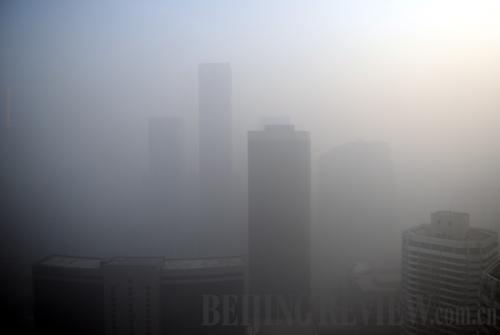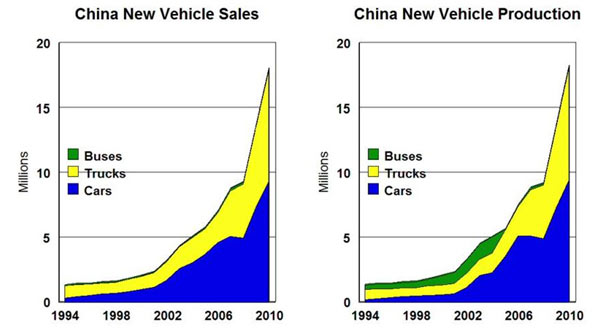|
 |
|
Guomao area near Beijing's Eastern 3rd Ring Road is enveloped with heavy smog on January 12. |
The third amendment to the prevention and control of atmospheric pollution needs to accelerate and add provisions such as measures on air pollution emergency incidents, regional joint prevention and control mechanism and fuel quality control, experts say.
The Chinese "Clean Air Act" was first put into effect in 1987, and its most recent edition was adopted in 2000. A newly revised draft copy was submitted by the Ministry of Environmental Protection (MEP) to the Legislative Affairs Office of the State Council in January 2010, but a copy has not yet been submitted to the National People's Congress, the Economic Observer reported.
Excessive air pollution during the Spring Festival holiday generated public outcry and many citizens are urging the government to adopt the new legislation.
Figures released on February 17 by the MEP show that 42.7 percent of 74 surveyed Chinese cities reported higher-than-normal PM2.5 reading. The highest average reading in a single day was 426 micrograms per cubic meter, or 5.7 times the country's standard of 75 micrograms, Xinhua News Agency cited.
"These rare, high-intensive, large-scale and long-lasting heavy pollution incidents lead to introspections over air pollution prevention and control efforts, and the economic and social development status in China, stimulating deeper discussions on amending air pollution laws," said Chai Fahe, deputy head of the Chinese Research Academy of Environmental Sciences, in an exclusive interview with CnDG.
 |
|
China new vehicle sales and production chart from 1994 to 2010 |
Vehicle-based shift
Professor Hao Jiming at Tsinghua University and member of the Chinese Academy of Engineering believes that China’s air pollution has changed since 2000.
"Emission intensity per unit GDP (100 million yuan) in China has declined in recent years. However, the total emission volume has risen due to GDP growth," he said.
International Council on Clean Transportation founding chairman Michael P. Walsh pointed out several outstanding changes. "One of the important changes is the adoption of the PM 2.5 standard which didn't exist 13 years ago, as well as the shift from coal-based air pollution to vehicle-based pollutants," he said. "Since vehicles by their nature are mobile, it creates the need for a national provision to ensure fuel quality."
China overtook Europe in vehicle sales in 2012 and the US in 2009.
Carbon monoxide, nitric oxide, nitrogen dioxide and other pollutants emitted by motor vehicles are among the major contributors to air pollution problems that frequently occur in Chinese cities.
In response to the above-mentioned problems, the State Council issued a timetable to upgrade fuel quality, aiming to implement a strict standard nationwide by 2017 in its latest bid to reduce pollution.
The country will issue a '5th-phase' standard for automobile petrol, with sulphur content within 10 ppm (parts per million) before the end of the year. There will be a grace period until late 2017, according to an executive meeting of the State Council chaired by premier Wen Jiabao in February, Xinhua reported.
|